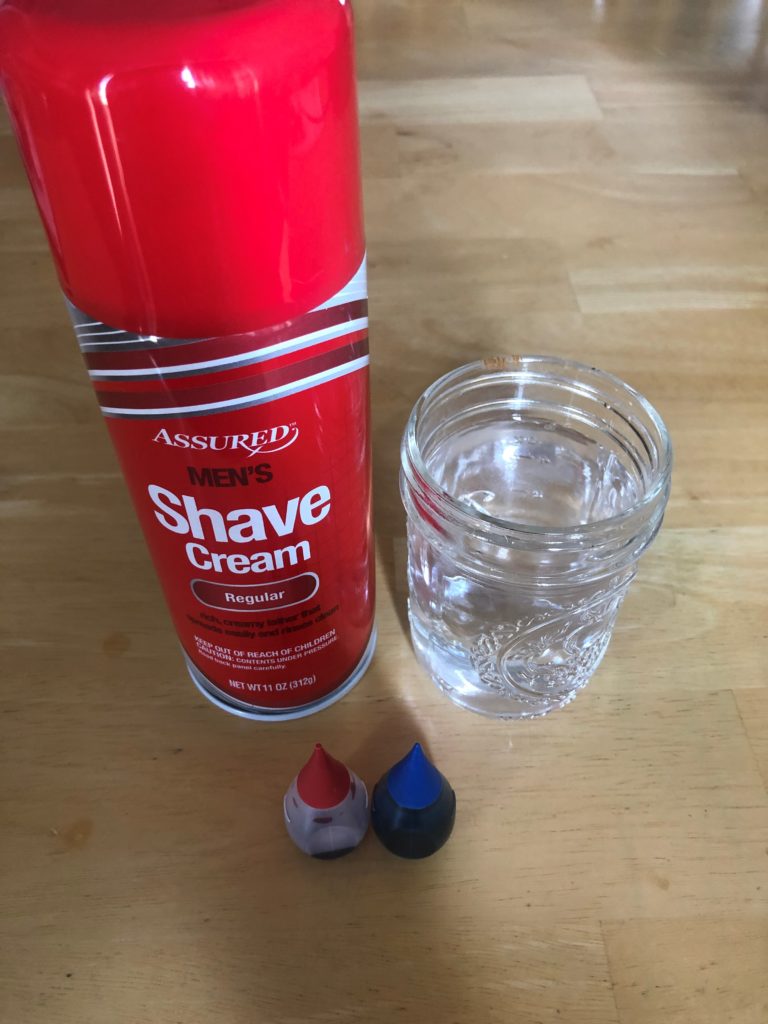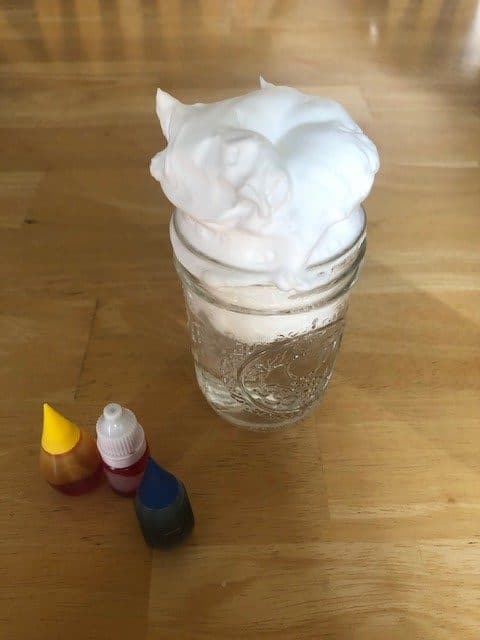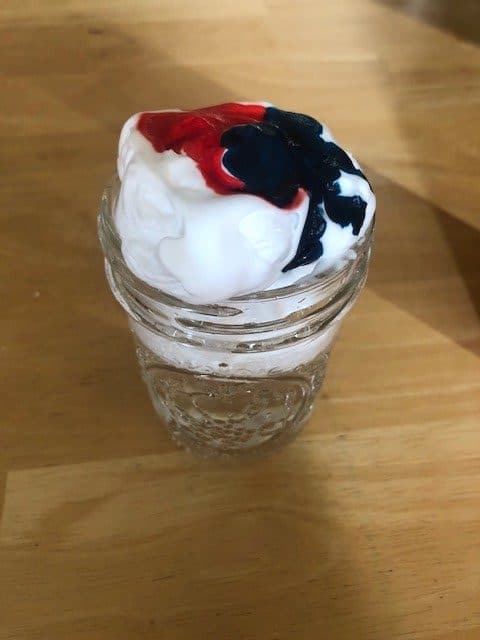Sponsored by: M&T Bank
By: Will Kawalec
Lead Play to Learn Facilitator
Materials:
Clear Glass or Vase
Shaving Cream
Food Coloring
Small Cup

Length:
Set up: 5 Minutes
Activity 5-20 Minutes
Academic Subject(s):
Art, Science This lesson supports the following curriculum standards:
VA:Cr1.2.PK-2, P-ESS2-1, K-ESS2-1, K-ESS3-2, K-PS3-1, 3-ESS2-3
They say: “April showers bring May flowers” but what does that really mean? Well, the old saying is trying to explain that sometimes unpleasant things (like a month of heavy rains) brings something good in the end (flowers blooming in May). What we are going to look at in this activity is the process of those “April Showers” or heavy rains by making a raining rainbow!
In this activity the child will not only get to use their imagination and create a colorful cloud, but also create a 3-dimensional cloud that displays two steps of the water cycle – condensation (water collecting in the clouds) and precipitation (rain)!
Directions:
Step 1: Fill a large clear glass with water, this should be filled 4/5 of the way. For this experiment, the water represents our atmosphere – the air all around us that we breathe.
Step 2: Spray substantial amount of shaving cream on top of the water, this is your cloud.
Step 3: Carefully drop food coloring onto the top of the shaving cream cloud. Make observations as the colors should run through the cloud and into the glass. This is a great opportunity to teach younger kids about color mixing buy using only primary colors and observing how they mix together to make secondary colors!
Tip: If you have an eyedropper at home, we recommend diluting the food coloring with water first then slowing adding it to your cloud using an eyedropper. Just like real clouds, this experiment won’t rain until the shaving cream cloud is filled with enough liquid. If you do not have an eyedropper the experiment will still work you will just need more food coloring.
What is happening here? The science explained: Just like with a real cloud, when the shaving cream becomes too full of water it begins to rain back down into the atmosphere. The collection of the water in the clouds is called condensation. The condensation falling into the atmosphere is also known as precipitation. Precipitation in this experiment is rain however, it can also come in the form of snow, ice, sleet or hail. Precipitation and condensation are just two of the steps in the water cycle.
Vocabulary Words
· Condensation– When water converts from a gas to a liquid. In the water cycle this is after water has evaporated in the air and begins to collect in the clouds.
· Meteorology– The branch of science that studies the weather. A meteorologist predicts what weather will happen.
· Precipitation– The condensation falling into the atmosphere. Precipitation in this experiment is rain however, it can also come in the form of snow, ice, sleet or hail.
· Atmosphere – The gasses that surround the earth or another planet. For earth this is the air we breathe every day!
· Water Cycle – This is the process of water circulating between the earth and the atmosphere. There are four basic steps in the water cycle.
1. Collection: examples of collection are oceans, rivers, lakes, streams etc. This is the part of the water cycle with water remains on the earths surface.
2. Evaporation: when water is heated up by the sun and turns into a gas
3. Condensation: When water converts from a gas to a liquid. In the water cycle this is after water has evaporated in the air and begins to collect in the clouds.
4. Precipitation: The condensation falling into the atmosphere. Precipitation in this experiment is rain however, it can also come in the form of snow, ice, sleet or hail.
· Primary Colors: These colors cannot be created by mixing together other colors. The primary colors are red, yellow and blue.
· Secondary Colors: These colors are created by mixing together two primary colors. The secondary colors are orange, green and purple. Orange is created by mixing red and yellow. Green is created by mixing blue and yellow. Purple is created by mixing blue and red.


